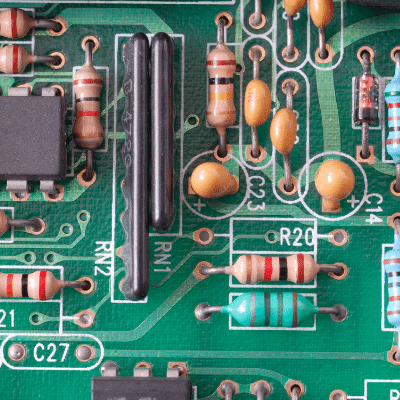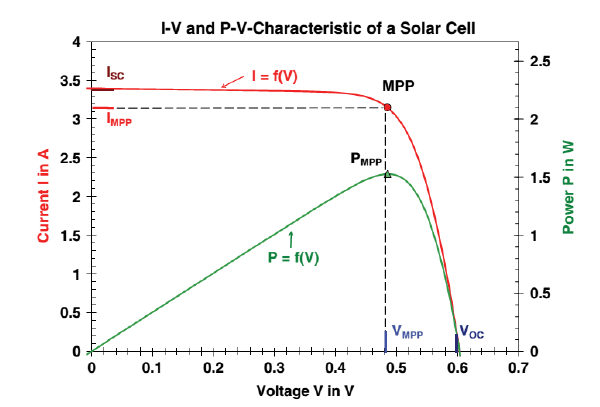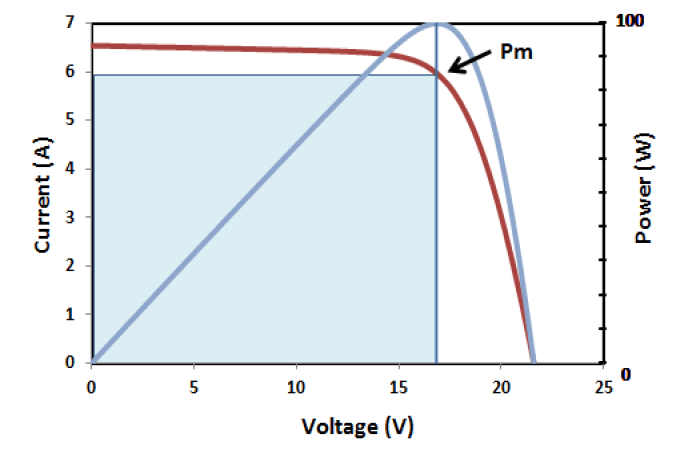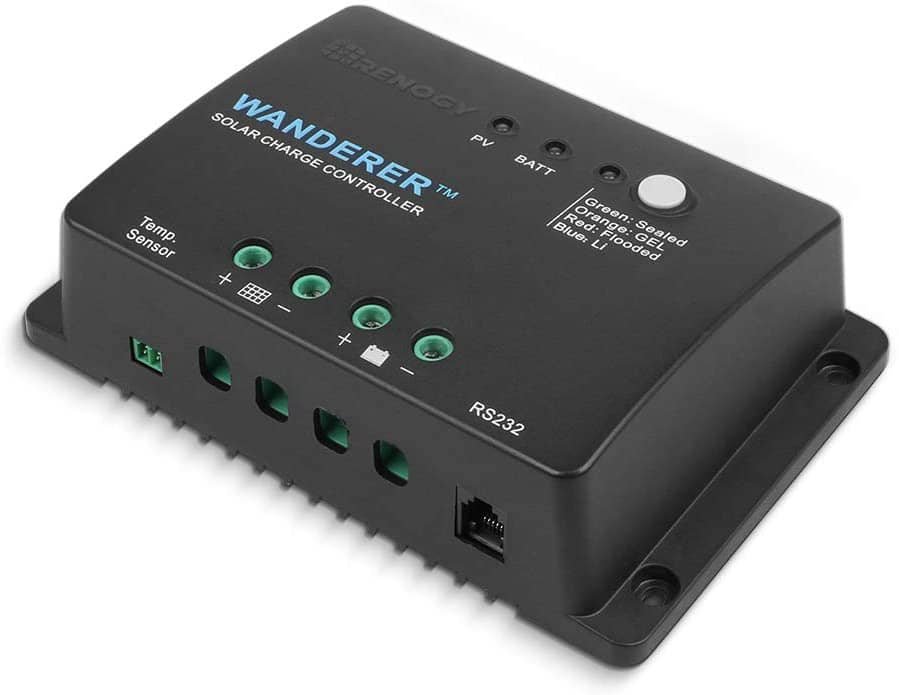Adequate battery charging is an important issue to be considered when handling off-grid PV systems. Therefore, including the correct solar charge controller in your system is very important.
What is a Charge Controller?
Fundamentally, a solar charge controller is a voltage and/or current regulator. It manages the energy flow going from the solar panels to the batteries, preventing them from overcharging.
Solar charge control devices are divided into two main types: PWM and MPPT.
In this article, we are going to discuss their main features, understand their operation, and carry out a comparison between them in terms of:
- Power performance
- Temperature
- Costs
But first, let’s find some answers to what you are looking for, that is, which is the charge controller that you need?
Which One Is Best For You?
The answer to this is… it depends on your situation like load, climate, PV array size, cell-type, battery type, and more. However, based on the pros and cons of each technology, the general recommendations are listed below.
Using PWM solar charger is a good low-cost option:
- For smaller systems handling simple applications like solar lighting, RVs, camping, and basic things like phone chargers.
- For systems with moderate to high temperatures.
- Where the efficiency of the system is not critical.
- For solar panels with a maximum power voltage (Vmp) close to the battery voltage (18V panel for 12V battery, 32V panel for 24V battery, and so on)
Read my article on the Best PWM charge controller
Read my article on the PWM charge controller efficiency
The MPPT controller is best:
- For larger (+300W) and more complex systems where an additional 20% performance or more energy is worth the expense.
- For those who require high-efficiency applications.
- When the solar array voltage is higher than the battery voltage.
- When your solar array has potential partial shade conditions.
- When you have space limitations.
Still not sure which one to choose? Understanding how these charge controllers work is also essential to your decision. Read on to know more.
How Do Solar Charge Controllers Work?
Now that you know when to choose MPPT or PWM, let’s find out how do they actually extract power from the solar panels to the batteries and load.

To understand what makes them different, it is important to have some previous technical background, mainly related to what is known as the I-V and P-V curves of the solar panels.
I-V and P-V Curves Of Solar Modules.
We are going to get a little bit technical here, but it will be worth it!
The power of a solar panel is the result of multiplying the voltage and current. The characteristic curves of a PV cell can be seen below. They are described as the current-voltage (I-V curve, marked in red) and power-voltage (P-V curve, marked in green) curves.

Source: Temperature Effect on Power Drop of Different Photovoltaic Modules – Scientific Figure on ResearchGate.
Moving along the curves, solar modules can have different points of operation (power output).
The most important point in the curve is the Maximum Power Point (MPP) which will occur when the module achieves maximum voltage (Vmpp) and maximum current (Impp). As you can imagine, this represents the highest power output that your solar panel can provide.
In the figure below, the I-V and P-V curves of a module for different points of operation are shown. The area in blue represents the power produced by the module. This area reduces whether the voltage is too high or too low.

The maximum point of operation. Source: Victron Energy
A Comprehensive Comparison: PWM vs MPPT
Appearance
PWM and MPPT controllers are quite similar in appearance, both have electrical terminals to connect the battery and solar panels. Also, both have led lights to monitor its operation. PWM charge controllers are generally smaller because they don’t need the big DC-DC convertor coils.
MPPT charge controllers are bigger and heavier.
Power Performance
As we mentioned, MPPT or maximum power point trackers technology is more advanced than Pulse Width Modulated because it allows the operating point to be the same as the maximum power point of the solar panels.
As an example, consider a solar panel that has a maximum power voltage of 32V (Vmp) and is connected to a 12V battery bank using both a PWM and a MPPT charge controller.
Using the PWM controller, the panel voltage must drop to match the battery voltage, therefore, since the Vmp is much higher than the battery voltage, the power output will be reduced considerably. Meanwhile, with an MPPT charge controller, the panel can operate at its maximum power point generating much more energy. In this aspect, the MPPT model outperforms the PWM charge controller substantially.
The efficiency of the system using PWM can be improved if the Vmp of the panels is close enough to the battery voltage (18V for 12V battery banks and 32V for 24V battery banks) and also by connecting panels in parallel whenever more power is needed.
Even though, the performance of an MPPT can be up to 30% more productive than a PWM charge controller, assuming good sizing conditions. If the sizing is not done properly, there will be more losses.
Read my guide: Best MPPT Charge Controllers
Temperature
The sun shining on the solar panel generates a temperature increase in the PV system. When a panel heats up due to the solar radiation, both the open-circuit voltage and the maximum power point voltage become lower while the current remains almost constant. In other words, voltage reduces when increasing temperature and increases when decreasing the temperature.

Voltage reduces when the temperature increases. Source: Victron Energy
The operating voltage at maximum power point at Standard Testing Conditions (25C°) is about 20V and the battery voltage is about 13.5V, an MPPT controller can extract more power from a solar array during colder conditions than what a PWM model can.
The reason for this is that the MPPT controller can adjust the output to the increase in the MPP (due to voltage increase). As a result, an MPPT controller in cool conditions can produce up to 20 – 25% more than a PWM controller.
In comparison, a PWM controller cannot adjust the voltage or the current because the pulse width modulation technology will simply provide a power output equal to the low battery voltage and the correspondent current in the I-V curve.
So, in warm climates, the difference in efficiency between PWM and MPPT is decreased.
Partial Shading
When a solar array operates with uniform solar radiation over its surface, there only exists a maximum power point (MPP) in the P-V curve. However, in any outdoor environment, trees, clouds, or obstacles can shade some sections of the PV system.
When there are partial shade conditions, the curves change and several new MPPs show in the scenario as can be seen in figure 6.

While the basic operation of a PWM can´t handle this condition, the MPPT controllers can track the different maximum power points that the partial shade produces and set the highest MPP as the operation point.
Costs
Simple PWM charge controllers are the cheapest type available; the costs range from 20$ to 60$. While the more efficient MPPT charge controllers will cost anywhere from $80 up to $500, depending on the voltage and current (A) rating. Cost is going to be a big factor in your decision.
Frequently Asked Questions
Does Irradiance Influence The Performance Of My Solar Charge Controller?
Reduced irradiance (sunshine) reduces the amount of current that the solar panels generate, moving the maximum power point downwards with the decrease of the irradiance.
This one is easy. Less sunshine = less power production.
Why is MPPT more expensive than PWM?
An MPPT charge controller is more expensive because it has more components. The heatsink alone is a high cost to manufacture, let alone the delicate electronics. If we compare that to a PWM it’s a world of difference.
Can PWM charge Lithium batteries?
In general, PWM charge controllers are designed to work mainly with lead-acid batteries. However, some PWM models such as the Renogy Wanderer which are particularly designed with a Lithium Battery Mode are capable of charging 12V batteries, including most 12V lithium models available on the market.

Can Solar Inverters Work as a Solar Charger?
Yes, they can. Some inverters are designed with the capacity to track the MPP of the solar array and use that power to charge batteries. These types of inverters are called hybrid inverters, mainly used in grid-tied with battery backup applications which are generally coupled with home energy storage systems. One downside to these is that they consume more power.
Does a solar charge controller stop charging when battery is full?
Yes. Once a charge controller has reached its voltage setting the charge controller will stop charging the battery. A solar charge controller charges the battery based on the internal resistance of the battery. If the internal resistance is low the charge controller will know that the battery is full.
Conclusion
When should you use a PWM or an MPPT charge controller?
- Use a PWM when you can closely match the solar panel voltage to the battery.
- Use a PWM when you have a small solar system that’s less than 200W in solar power.
- In all other cases use an MPPT charge controller.
A PWM charge controller is like pressing a lemon with your hand while an MPPT is using a professional juice pressing machine. You will get every last drop of juice (power) out of it.

 I have written a book that contains all the information you need to get started with off-grid solar power.
I have written a book that contains all the information you need to get started with off-grid solar power.
With over 1,300 reviews at 4.5 stars, I can almost guarantee you that this book will save you $100’s on buying the right equipment.
You can buy it here on Amazon.com

I’m an off-grid enthusiast. I created this website to give clear and straight-to-the-point advice about solar power. I’m also the author of the book ‘Off-grid solar power simplified‘. Read more about me on my about page, check out my Youtube channel, or send me a message.

Hi Nick, thanks for the informative article. There’s still one thing I’d like to know about charge controllers – their power draw. I can’t find any information on this in any articles or videos online but I’ve read a few comments on MPPT controllers from people who used them and complained that they consumed a lot of power from the batteries at night so much that they could even deplete them fully if they were not fully charged before sunset. PWM controllers supposedly don’t have this problem. Do you have any experience with this?
I’m still at the phase of planning my first solar system and learning but I think I wouldn’t want a charge controller to deplete my batteries, especially in winter conditions when there’s not much sunshine. I didn’t know that a charge controller could draw power from the batteries – do you think this is true? If so, then what if I connected my batteries to the controller through a diode to eliminate the power draw – would the controller work at all?
While I have heard about this, this is not the case anymore in commercial products. It is true that at night, the solar panels draw energy from the battery to ‘energize’ the solar panels. This is a natural phenomenon that happens. But now all the charge controllers, even PWM have a diode in them which blocks the flow of electricity going backwards. If people complain about this, the diode is missing due to a manufacturing error.
Thanks for the reply. That would make sense – if this problem was common then more people would notice it instead of the rare few comments here and there. It is very likely they had some obscure or old controllers, but it’s good to know it’s not a problem any more.